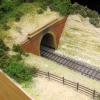© Hawlfraint cyfranwyr OpenStreetMap a thrwyddedwyd gan yr OpenStreetMap Foundation. 2025. Trwyddedir y gartograffeg fel CC BY-SA.
Manylion
| Pennawd |
[EPW018623] The Harbour, Whitstable, 1927 |
| Cyfeirnod |
EPW018623 |
| Dyddiad |
22-June-1927 |
| Dolen |
|
| Enw lle |
WHITSTABLE |
| Plwyf |
|
| Ardal |
|
| Gwlad |
ENGLAND |
| Dwyreiniad / Gogleddiad |
610801, 167094 |
| Hydred / Lledred |
1.0284671904407, 51.36323099543 |
| Cyfeirnod Grid Cenedlaethol |
TR108671 |
Pinnau
 Cockle Man |

Alan McFaden |
Wednesday 9th of July 2014 09:03:58 AM |
 Whitstable Habour |

Alan McFaden |
Wednesday 9th of July 2014 09:01:16 AM |
 The harbour, opened in 1832, was built by the Canterbury and Whitstable Railway to help increase their traffic. It is now much modernised with an additional quay to the west. Ironically, today there is almost no sign of the railway that created what is now an important feature and focal point of the town. |

Maurice |
Tuesday 21st of May 2013 07:47:36 AM |
 There is still a row of beach huts here today... although they appear to be rather less higgledy-piggledy than those seen here. |

Maurice |
Tuesday 21st of May 2013 07:05:19 AM |
 This structure would appear to be a sand drop. Perhaps sand came in by ship and was stored before being reloaded for forwarding by train. There are strings of loaded wagons waiting by the quay. |

Maurice |
Tuesday 21st of May 2013 06:58:38 AM |
They also appear in EPW035504, viewed from better angle. |

Maurice |
Tuesday 21st of May 2013 07:07:41 AM |
 Round ended South East Railway open wagons. |

Maurice |
Tuesday 21st of May 2013 06:56:16 AM |
 This is the north end of the Canterbury and Whitstable Railway, one of a number of railways that claim to be the first public railway. From the beginning, the 1830 it was a public railway, intended for passengers as well as freight. The world's first season ticket was issued for use on the line in 1834. Unlike the Liverpool and Manchester Railway which opened four months later, it used cable haulage by stationary steam engines over much of its length, with steam locomotives restricted to the level sections. Even today aerial images show the route made up of straight sections each being a cable length. There was a small bore tunnel on the line which restricted its use in later years, with steam engines having to have cut down cabs to get through. All evidence of the railways in this picture has gone. |

Maurice |
Tuesday 21st of May 2013 06:54:49 AM |










![[EPW018623] The Harbour, Whitstable, 1927](http://britainfromabove.org.uk/sites/all/libraries/aerofilms-images/public/100x100/EPW/018/EPW018623.jpg)
![[EPW054079] The Paddock, the harbour and environs, Whitstable, from the north-west, 1937](http://britainfromabove.org.uk/sites/all/libraries/aerofilms-images/public/100x100/EPW/054/EPW054079.jpg)
![[EPW054080] The harbour and town, Whitstable, from the north-west, 1937](http://britainfromabove.org.uk/sites/all/libraries/aerofilms-images/public/100x100/EPW/054/EPW054080.jpg)
![[EPW009153] The Harbour and environs, Whitstable, 1923](http://britainfromabove.org.uk/sites/all/libraries/aerofilms-images/public/100x100/EPW/009/EPW009153.jpg)

